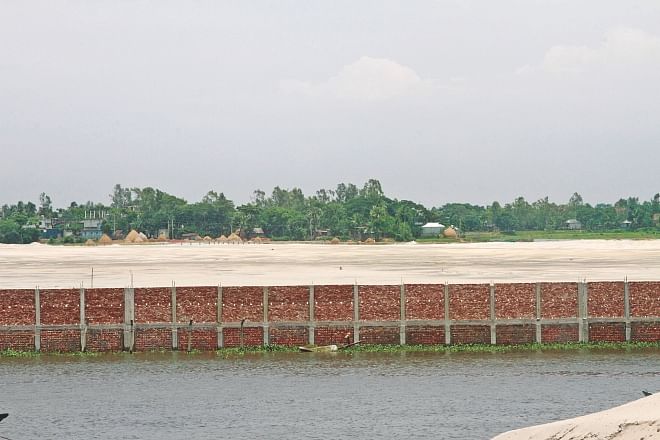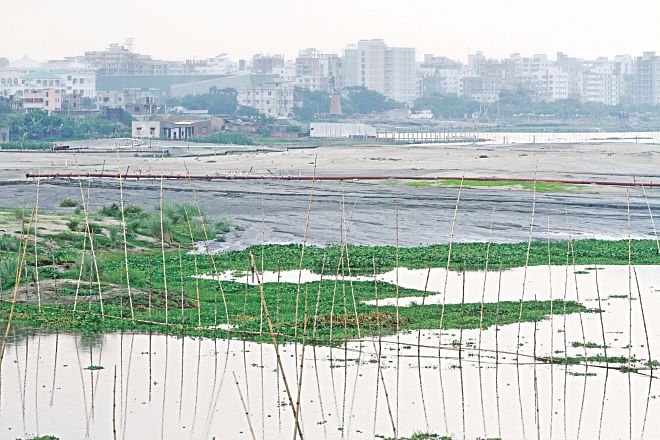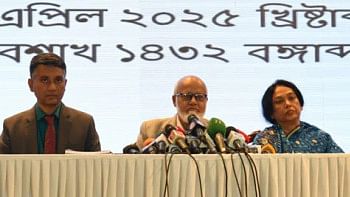Goodbye to city's flood flow zones

A cabinet committee yesterday Okayed alterations to Detailed Area Plan (DAP) to allow some private housing schemes on conservable flood flow zones of the capital.
This would pave the way for legalising Jolshiri Abashan housing scheme of the Army in Rupganj, Protyasha of retired government officials (admin) on the Turag in Tongi, and portions of Bashundhara housing project in Baridhara.
The Protyasha project and the portion of Bashundhara project had been declared illegal by the High Court in June 2011 along with 75 other real-estate projects and the government was asked to scrap the projects and remove all illegal developments done there.
The other projects to benefit from the approval are American International University Bangladesh in Joar-Shahara of the capital and University of Information Technology and Sciences in Badda.
These would be built in DAP earmarked residential areas which have been altered to include institutions.
The cabinet committees move is being seen as a win for influential real-estate companies and a loss for conservationists, environmentalists and town planners.
Housing Minister Mosharraf Hossain, who presided over yesterday's cabinet committee meeting, said they approved the requests of the army's and admin officers' housing schemes as the two had come up with engineering solution to water drainage.
“Those were once flood flow zones but not anymore as they have developed and built them up,” he said.
Replying to a question, the minister said any other real estate developer that has developed housing on wetlands and flood flow zones would also get approval if they keep provision for sewer and drainage.
There had been tremendous pressure on the government for several years to alter the DAP and accommodate the schemes developed by destroying wetlands, croplands and rural settlement flouting the DAP and housing laws, official sources said.
“Finally, the move was successful, as both Rajuk planning department and the cabinet committee favoured it,” said a top Rajuk official.

Responding to a question on the consequences of altering the DAP, Prof Jamilur Reza Choudhury, who led the DAP technical committee, said, “The consequences are suffered every day with knee-deep waterlogging after little rainfall and I do not know what else is left to do to protect this vital plan.”
Interestingly, there is no need for filling wetlands and flood flow zones to build homes. At least 35 percent of the 1,528 square km DAP is earmarked as residential areas and the 35 percent has not been exhausted.
If all the residential land were to be utilised, at least 1 crore more people would be able to live in the capital.
Noted town planner Khondaker M Ansar Hossain a few months ago had said the capital could accommodate 2.75 crores of people at a rate of 350 population density per acre without filling in flood flow zones, river plains, lakes, water retention ponds and canals.
Rajuk's own Prubachal project could accommodate 10lakh people and the Uttara Third Phase another 10 lakh. Its Jhilmil project in Keraniganj could be home to 1.33 lakh people.
Syeda Rizwana Hasan, chief executive of Bangladesh Environment Lawyers Association, said the government's job was to implement the master plan, not to facilitate real-estate developers' business by bending the plan and rules. She said as per law, no organisation could hold on to over 60 bighas of agricultural land or 100 bighas of other types of land.
According to DAP documents, Rajuk estimated that nearly 65 percent of the proposed site of Jolshiri was the flood flow zone, 12 percent was water bodies and 13 percent rural settlement. There was a natural canal that flows to Dakshin Nabagram from Beraid through the site.
The DAP technical committee had recommended scrapping the Protyasha housing project as it was on the flood flow zone.
The cabinet committee's decision to scrap a 100-foot wide canal along the Purbachal Link Road would help the approval of at least six more blocks of Bashundhara housing in Baridhara, from Block-G to Block-L.
Bashundhara has approval for Block-A to -F, said Rajuk officials.
Golam Rabbani, secretary to the housing and public works ministry, said, “The job of the cabinet committee is to review DAP and there is nothing to worry about.”
The DAP, with a view to ensure a planned, healthy and environmentally sound capital, was finalised after an epic battle against vehement opposition by powerful real-estate developers.
But the government, immediately after its gazette notification in 2010, formed a seven-minister committee for “final review”.
Following letters from over 20 developers of illegal housing schemes asking for alteration to the DAP, a technical committee last year prepared a report based on GIS and satellite maps, video and photographs and showed the present and past state of wetlands and flood flow zones in the DAP.
Convener of the technical committee Sheikh Abdul Mannan, a Rajuk board member for planning, said they presented their findings as per the DAP but the decision lied on the cabinet committee.
The Amry's Jolshiri Abashan with around 6,000 plots, five-katha each, was launched in early 2010 on the flood flow zones of 24 moujas of Kahetpara and Rupganj unions of Rupganj upazila between the Shitalakkhya and the Balu rivers.
Thousands of villagers burst into protest and got involved in a violent clash with armed army personnel and other law enforcers. They torched the Tanmushury army camp on October 23, 2010.
As the Army had opened fire, it left Mostafa Jamal Haidar dead and three other youths -- Saidul Islam, 18, Md. Shamsher Ali, 28, and Abdul Alim Masud, 32 -- went missing. An unspecified number of villagers were grievously injured and maimed.
The Army following the incident went behind the stage. It carried on with government blessings and got housing developer Ashiyan to procure land and fill the land with dirt.

 For all latest news, follow The Daily Star's Google News channel.
For all latest news, follow The Daily Star's Google News channel. 



Comments